Memory foam vs Purple grid technology — which mattress material is best for your sleep?
Purple’s proprietary GelFlex Grid offers a unique sleeping feel, but is it better than memory foam?
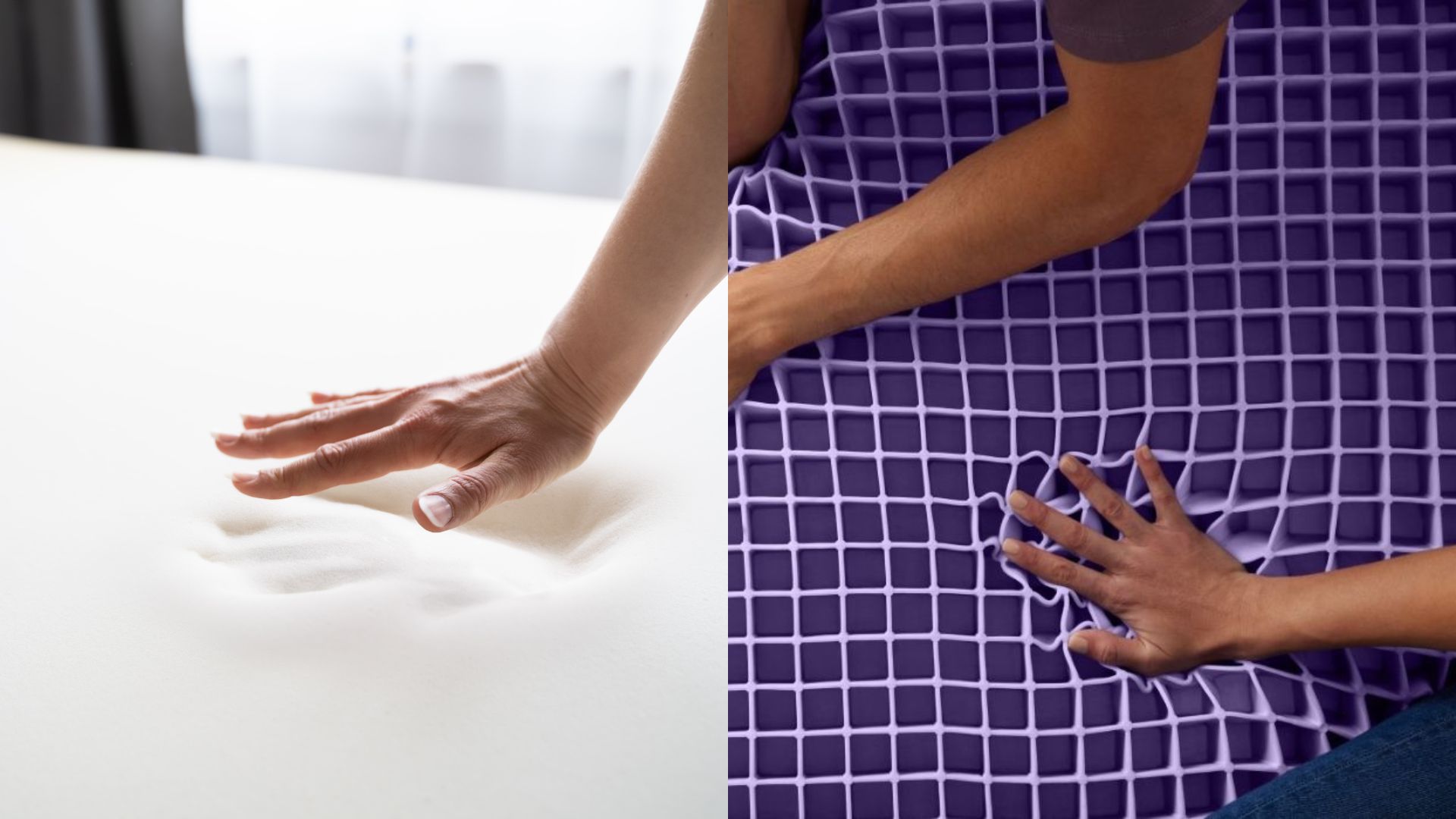
When it comes to the memory foam vs Purple grid technology debate, it can be hard to know which mattress material is best for your sleep. In this guide, we’re going to take a close look at both comfort layers to help you decide between them.
Many of the best mattresses contain either memory foam or Purple's signature grid technology - GelFlex - both of which work provide outstanding pressure relief. But while there are similarities between the two, there are also a few key differences.
While a mattress crafted from either memory foam or grid technology look similar on the surface, the way that each mattress has been constructed plays a huge role in your overall comfort. Of course, like firmness, comfort is subjective. Here, we'll weigh up the pros and cons of both memory foam and grid technology to help you decide which is best for your body type and sleep needs.
What is memory foam?
Memory foam is a material that was originally designed by NASA in the late 1960s for its astronauts. You’ll sometimes hear it referred to as visco- elastic foam. It’s made from polyurethane and is the ideal choice for those who like to sink into their mattress, experiencing a memory foam ‘hug’ that cushions pressure points while still providing plenty of support. Memory foam reacts to body heat, softening slightly to help it shape to the contours of your body.

It's an extremely popular material with those suffering with aches and pains and many of our best mattresses for back pain choices contain memory foam in some level (the Purple Plus is also on this list). Another advantage of all-foam mattresses is that they tend to be considerably cheaper than their hybrid counterparts, making them an excellent choice for those on a budget.
While the best memory foam mattresses do an excellent job of regulating temperatures, some memory foam beds retains heat, which can make these mattresses unsuitable for hot sleepers. Many foam mattresses get round this though by adding in gel-infusions to the foam, or products such as graphite and carbon that are knows to have cooling qualities.
What is Purple’s grid technology?
Purple’s GelFlex Grid is made from the brand’s proprietary GelFlex polymer and, in Purple’s words, uses a ‘repeating geometric structure to create cushioned comfort while maintaining support.’ What does this mean in layman’s terms? Essentially the grid adapts instantly to sleepers’ movements and reconfigures instantly to avoid any indents on dips in the mattress where you’ve been lying.
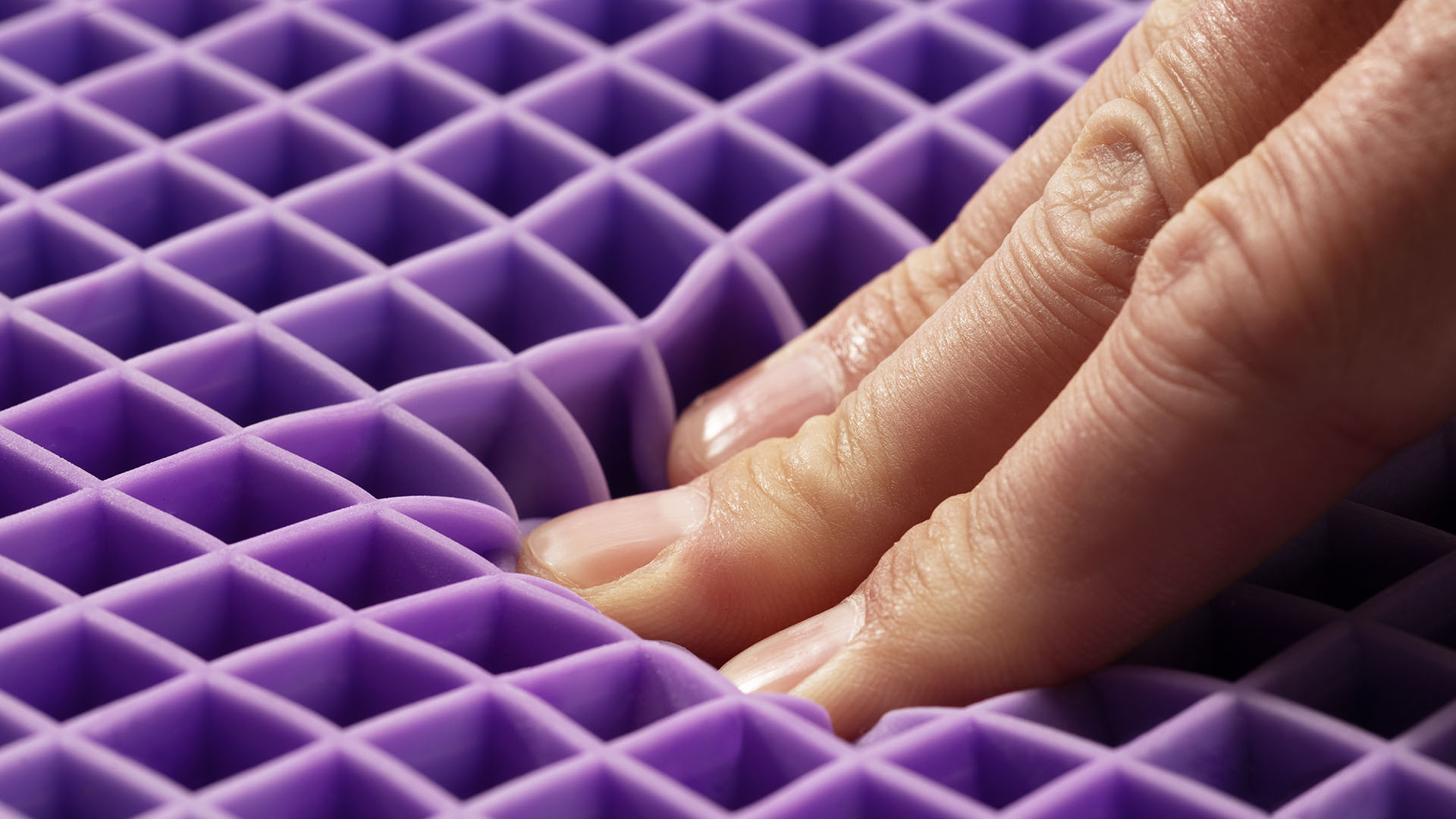
Because of its adaptive technology, it’s quite hard to rate the firmness of Purple mattresses. The grid is soft where you need it, in areas such as the arms and around the shoulders but manages to also offer firmer support around the lumbar region and spine.
It’s cushioned and comfortable, but keeps the spine aligned and is firmer than might be expected. We rate the grid as being particularly effective for joint pain sufferers and, as mentioned above, our Purple Plus mattress review recommended the mattress for joint pain in our best mattresses for back pain round up.
Memory foam vs Purple Grid technology: Key differences
As you might expect from reading this far, there are some key differences between memory foam and the Purple GelFlex Grid. Let’s break these down into some key sections:
Design
Although memory foam mattresses are designed slightly differently from brand to brand, they will all be made with an all-foam construction. One of Purple’s biggest rivals is Tempur-Pedic, so let’s take its Tempur-Adapt mattress as an example. This mattress is made with three layers of foam – a polyfoam core for stability, followed by a layer of Tempur material for support and comfort, with another layer of softer Tempur-ES material at the top to provide contouring and that ‘hug’ which memory foam is so well known for.
By contrast, the entry-level Purple mattress starts with the bouncier grid layer, which has a foam boarder to firm up the edges. Underneath this is a layer of comfort foam for more contouring, with the mattress finished with a base of sturdier support foam. Both mattresses obviously also have covers.
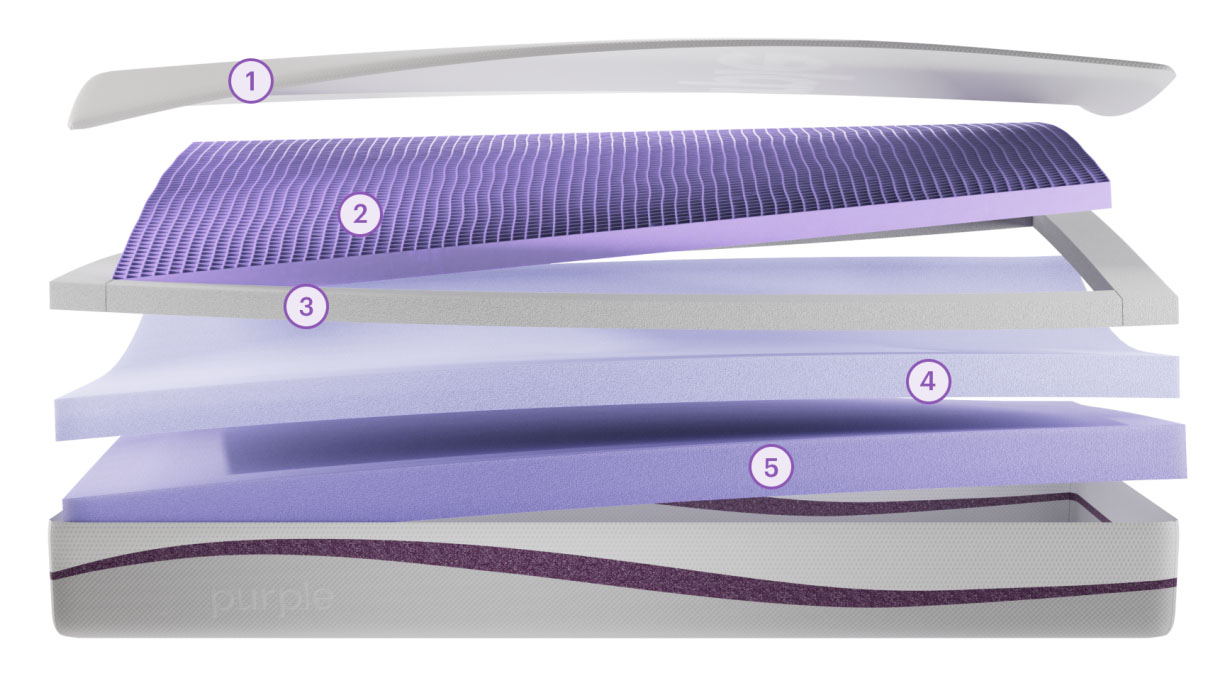
Comfort & Support
Both memory foam mattresses and the Purple grid technology offer fantastic pressure relief, but the Purple mattresses are designed to suit a wider range of sleeping styles. Because of the grid’s unique ability to be both firm and soft where needed, all sleeping styles (back, stomach, side, combination) should enjoy it.
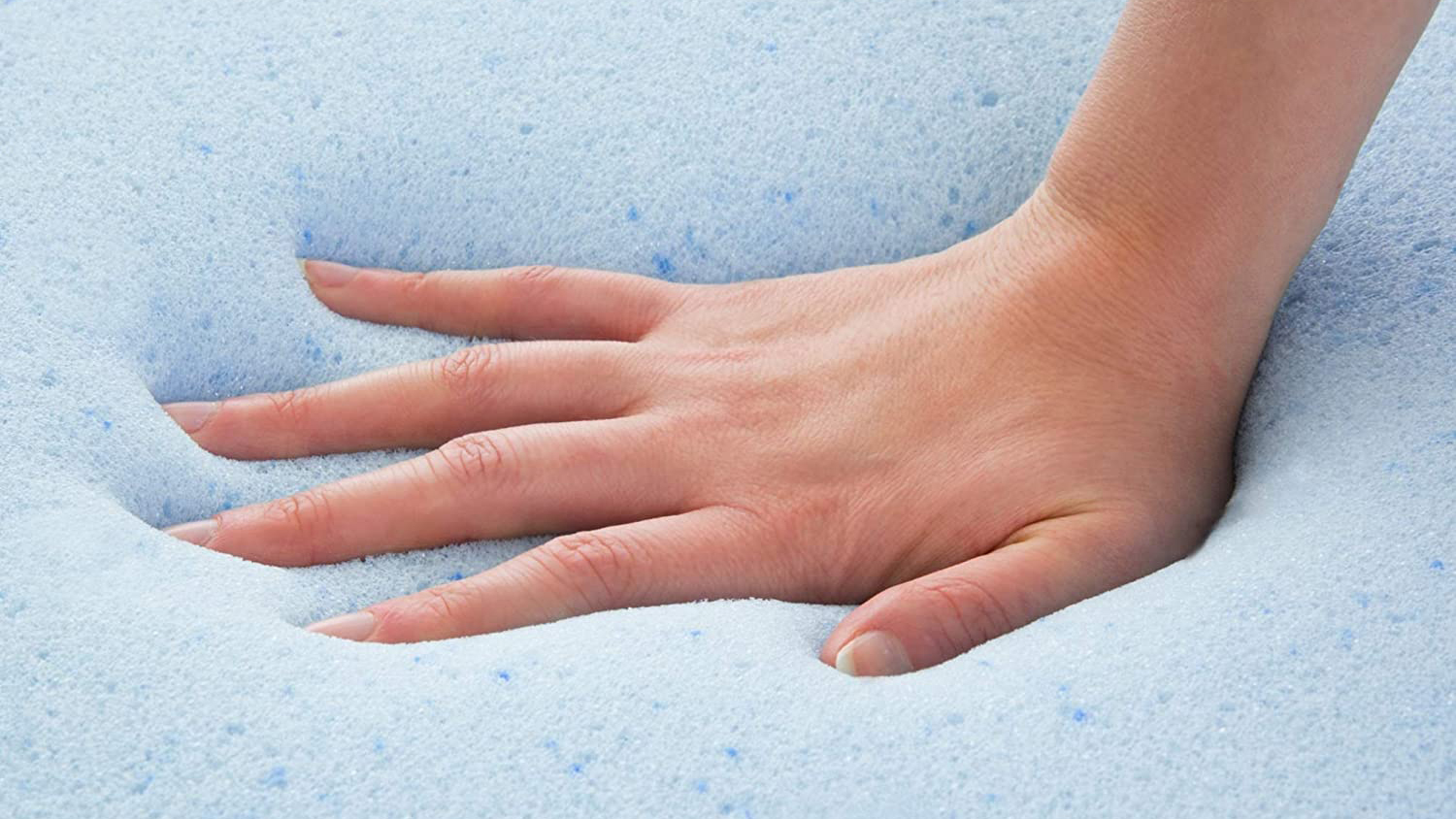
Memory foam mattresses, on the other hand, are much softer and create more sinkage when sleepers lie on them. This makes them particularly suited to side sleepers, with many of the best mattresses for side sleepers being memory foam. Some back sleepers will also enjoy the feel of memory foam, but stomach and heavier weight sleepers are likely to find that they aren’t supportive enough — you can learn more about how the feel compares with our Purple Original vs Leesa Original mattress showdown.
Temperature regulation
Memory foam is notorious for its ability to trap heat. Because sleepers sink into the mattress and the foam is slow to respond, it’s hard for heat to escape effectively. Manufacturers often add cooling infusions to the foam, such as gel, charcoal, or graphite, but there’s some discussion as to how effective these really are. If you enjoy the hug of memory foam but sleep hot, you might want to investigate our best cooling mattress selections to discover mattresses with cooling covers or other features to stop you overheating.
By contrast, the original Purple mattress is actually one of our picks of cooling mattresses, with the grid doing a fantastic job of preventing overheating and allowing the air to circulate throughout the mattress. And because you’ll feel like you’re floating on this mattress, rather than sinking in, even the hottest sleepers should feel comfortable through the night.
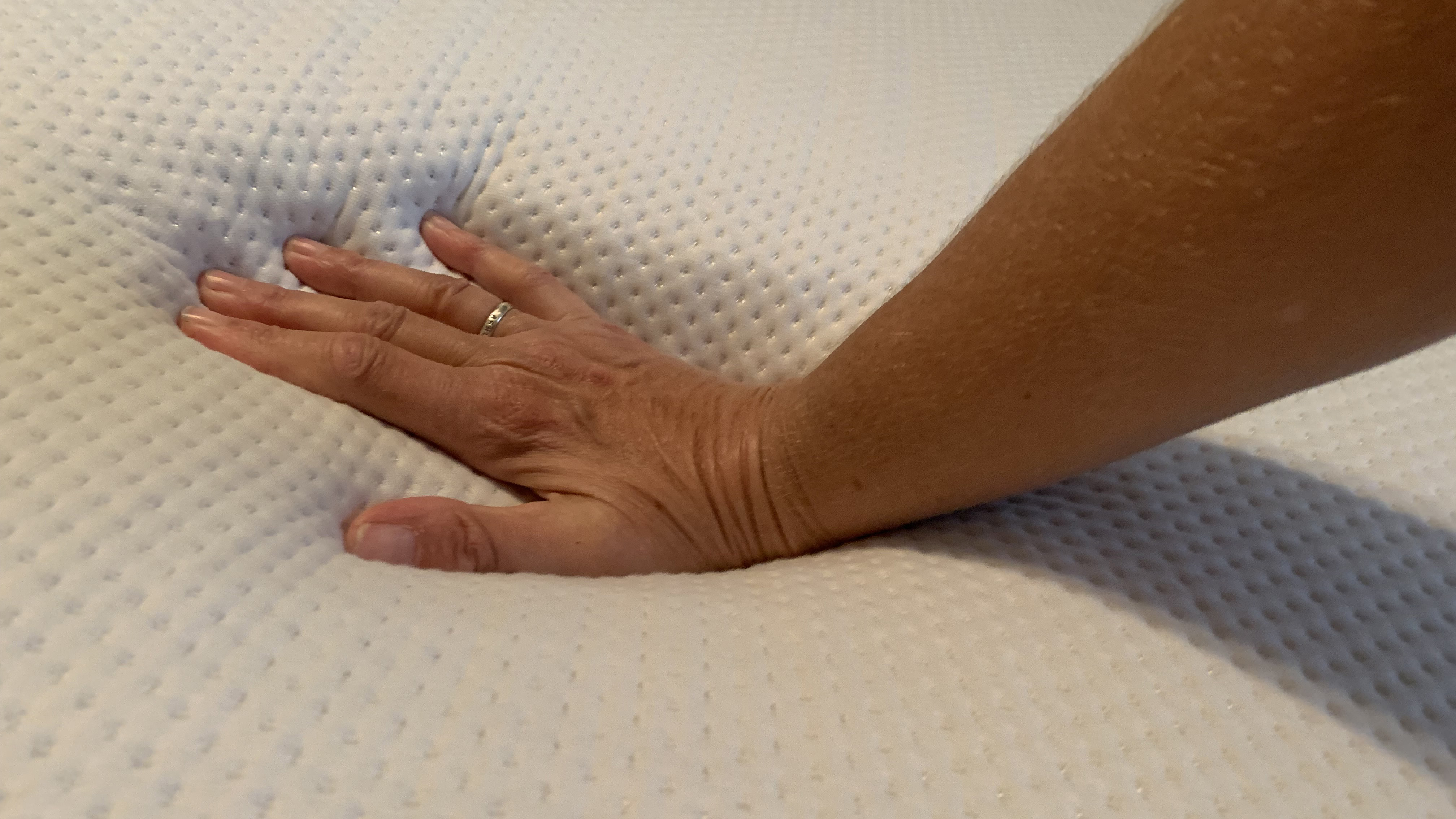
Maintenance
It doesn’t matter whether you choose a memory foam or Purple mattress; you should always invest in one of the best mattress protectors to keep your mattress clean and free from stains. Mattresses can be spot cleaned if you do get a mark on them.
Durability wise, it’s also worth noting that memory foam tends to degrade a little quicker – you should expect the Purple grid technology to give you a slightly longer life span.
Prices & deals
We’re going to compare our top memory foam mattress – the Nectar Mattress against the original Purple Mattress here.
Nectar never sell its mattresses at list price, so it’s often just a case of waiting for the best Nectar mattress sales deals. The current evergreen offer is 40% off, meaning you’ll pay just $659 for a queen, plus you get a full 365 nights to try out the mattress.
Purple mattress sales take place regularly throughout the year and during larger sales events you can find discounts of up to $400-$500. The usual discount though is $200, taking a queen mattress down to $1,099. You only get a 100-night trial with the Purple though. Although there is a large price difference, these are completely different mattresses and the one you choose should depend on the ‘feel’ you want as opposed to the price.
Memory foam vs Purple Grid technology: Which should I buy?
Buy a memory foam mattress if…
✅ You’re looking for deep sinkage: If you’re a fan of the distinctive memory foam ‘hug’ and enjoy sinking into a mattress, you should consider a memory foam mattress.
✅ You sleep with a restless sleeper: The ‘hug’ of memory foam means that motion is extremely effectively absorbed, and you shouldn’t feel any movement from a restless partner.
✅ You’re a side sleeper: Memory foam does a particularly good job of cushioning the pressure points at the shoulders and hips for those who sleep on their sides.
Buy a Purple mattress with grid technology if…
✅ You’re a hot sleeper: The GelFlex Grid in Purple mattresses allows air to flow freely, preventing sleepers from overheating.
✅ You suffer with joint pain: Time and time again, Purple mattresses are praised by customers for their ability to ease aches and pains with the excellent pressure relief offered by the grid.
✅ You want a mattress that suits most people: Purple mattresses will suit all sleeping styles (back, side, stomach, combination) and are therefore great all-rounders.
Sign up to get the BEST of Tom's Guide direct to your inbox.
Get instant access to breaking news, the hottest reviews, great deals and helpful tips.

Jo Plumridge is an experienced mattress reviewer with several years' experience covering all things mattresses and sleep, and who tests memory foam, hybrid and organic mattresses. What Jo doesn't know about a boxed mattress isn't worth knowing, so naturally we tasked her with producing a series of features for Tom's Guide looking at all aspects of mattresses, from how to pick between latex and memory foam (it's a tricky one), to the seven mistakes people make when buying a mattress for the first time. When testing the DreamCloud Luxury Hybrid for Tom's Guide, Jo said: "I loved the back support and pressure relief it offered. Plus, it looks far more expensive than it is." When she isn’t writing about sleep, Jo also writes extensively on interior design, home products and photography.
